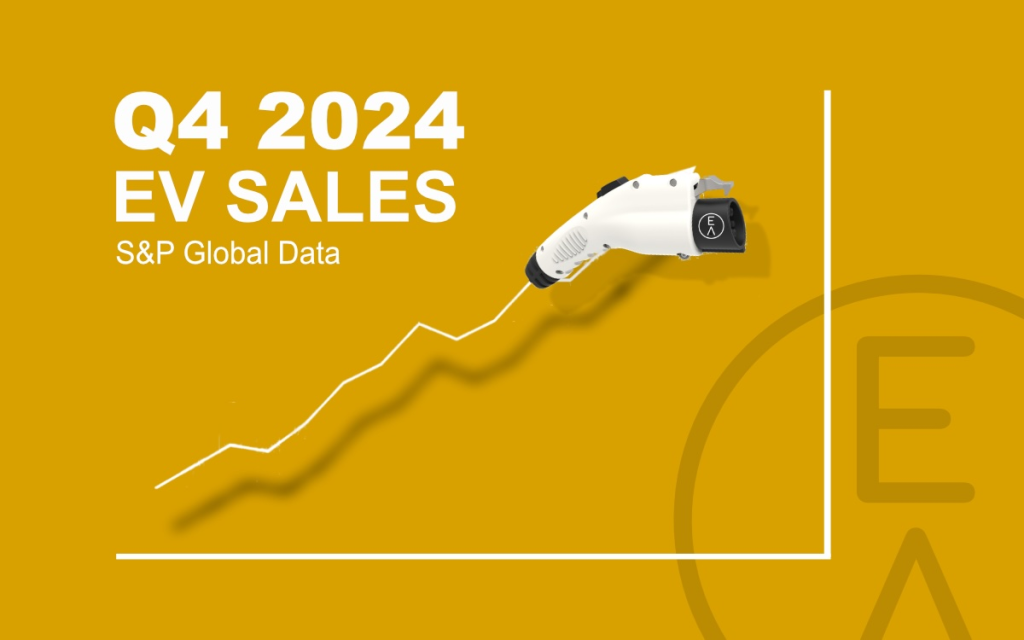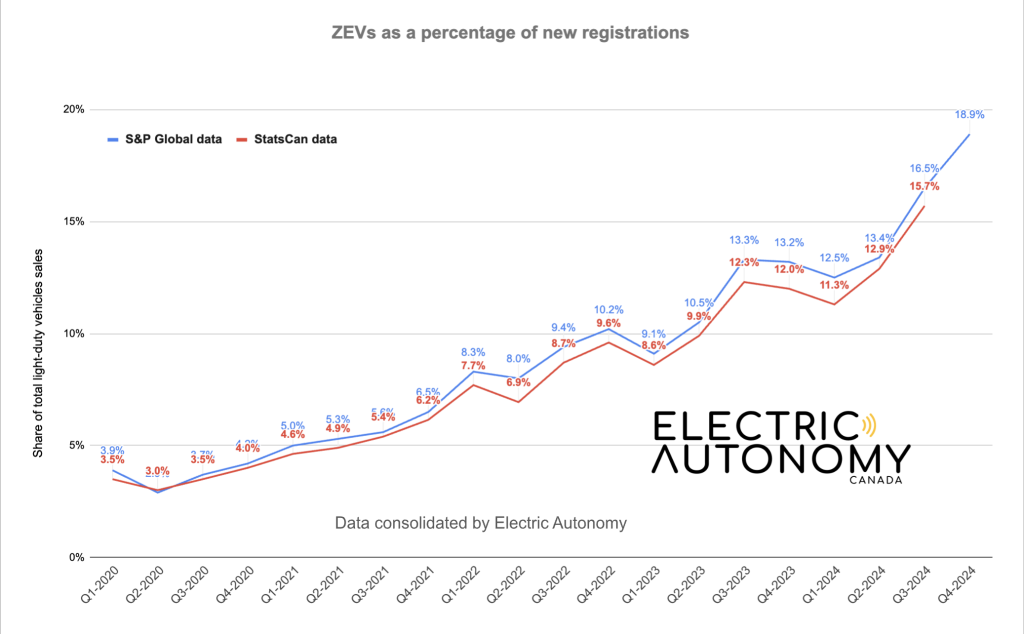Canada’s zero-emission vehicle (ZEV) adoption rate reached a significant milestone in Q4 2024, hitting 18.9 percent, according to S&P Global Mobility. This impressive figure, surpassing earlier predictions for the year, signals a strong and growing interest in electric and plug-in hybrid vehicles among Canadian consumers. Notably, Quebec continues to lead the nation in ZEV adoption, with a remarkable 42.0 percent penetration rate, accounting for a substantial 60.0 percent of all ZEV registrations nationwide.

The data reveals a robust increase in battery-electric vehicle (BEV) adoption, climbing to 14.3 percent in Q4 2024. Plug-in hybrid electric vehicles (PHEVs) also saw growth, reaching a 4.6 percent adoption rate. Overall, ZEV volume in Canada surged by 44.2 percent, significantly outpacing the 9.5 percent increase in total light-duty vehicle sales. This surge demonstrates a clear shift towards electric mobility, driven by factors such as environmental awareness and advancements in EV technology.
While Quebec maintains its position as the national leader, other provinces are also making strides in ZEV adoption. British Columbia follows with a 22.5 percent adoption rate, while Ontario is approaching double digits at 9.6 percent. Urban centers across Canada, including Calgary, Halifax, and Victoria, are also seeing increased ZEV adoption, indicating a widespread shift towards electric vehicles in both metropolitan and regional areas.

Despite the positive momentum in 2024, S&P Global Mobility forecasts a potential slowdown in ZEV adoption in Q1 2025. Factors such as the discontinuation of provincial and federal purchase rebates, along with market instability due to potential tariff wars, are expected to impact sales. The report highlights a significant drop in BEV volumes in January 2025, with major players like Tesla and Chevrolet experiencing substantial declines. However, the long-term trend towards ZEV adoption remains strong, and with continued innovation and infrastructure development, Canada is poised to further accelerate its transition to electric mobility.
